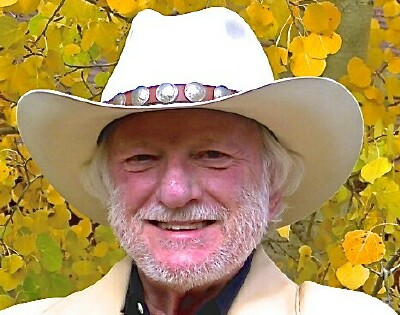"The Revolutionary Evolution of the Media" -- Chapter 1, Part 2

Chapter 1, Part 2
The word or the symbol?
Still a good question … but if you buy (as I, by the way, do) the arguments made in Steven Pinker’s The Language Instinct: How the Mind Creates Language,you’ll come to understand that language is an inherently human characteristic. It is an instinct that is unique to humans (not that other species don’t have their own idiosyncratic aspects) and part of the structure of the brain. As Charles Darwin first opined, language ability is “an instinctive tendency to acquire an art.” Namely, to communicate.
And, despite Genesis 11:1-9 (the Old Testament story of a jealous God making the descendants of Noah speak a variety of languages to keep them from coordinating the building of the tower to reach the heavens), alllanguages have more in common than not. As Noam Chomsky postulated, a visiting Martian scientist would conclude earthlings, despite their “mutually unintelligible vocabularies,” would speak the “same” language. After all, we can communicate across almost every extant and many dead and/or dying languages.
So what’s that got to do with modern communications or how we got here? The first intrapersonal communications were, in fact, verbal. The symbols (writing) came a little later. The real history of communications revolves around the changes among “time, space and acquaintanceship” as Pinker put it.
Think of communicating across time, across space and beyond one’s immediate circle of friends and family. Then, think about the changes in each aspect. First, growth in the numbers within a given circle (extended family to tribe, for instance). Second, as time contracts; that is, the speed of distribution changes. Third, think of distance being expanded and contracted (in a sense) at the same time. Cable guru Dr. John Malone once declared the “death of distance” as a communications achievement.
So let’s start to track how the centuries, in fits and starts, brought change while, in another sense, everything remained the same. “Content” was originated. Content was communicated. Content was received. Or not. There is always “noise” in the process.
And, as families grew into tribes, effectively communicating brought more complicated problems. Those that could write and read -- both heads of families and tribes as well as designated keepers of the faith and the myths -- had to find a way to communicate to the growing masses.
In ancient times the world’s tribes tended to pick either settling down in a particular place or becoming nomadic in a particular region. One built relatively permanent settlements; the other created a sort of moveable city. In both cases, decisions were originally communicated by simply calling all adults (sometimes everyone) together. Sometimes even discussion was allowed before pronouncements were made.
To keep all on, so to speak, the same page, added to the simple communicating of news or decisions made, poems, songs and entertainment such as plays and recitals were added in order to reinforce the messages, orders or ways of looking at their world.
This happened in all parts of the world. Often with wildly differing belief systems. Yet all developed along the lines of rule and of faith.
As noted, these two pillars of control of knowledge are inherent in how mankind developed. Those separations are still with us in secular and religious structures in every part of the world.
Why religion in a discussion of communications? Well, religions have been the keepers of the flame in both a private and societal sense throughout the history of the world. In the West and Middle East, religion developed a monotheistic approach in Judaism, Christianity and Islam. Collectively they are often called the religions of “people of the book.” While other cultures have differing religious views and rituals, they all share significant personal and societal communications structures. One interesting corollary is that the more economically successful a people, the more complex the religious rituals become.
Like language, the quest for religion is inherent in mankind. It is an instinct. In World Religions: From Ancient History to the Present (edited by Geoffrey Parrinder), “The starting point of religion must be in a belief in a sacred power which transcends the universe … The recurrence of this conception of deity in all states of culture and phases of religious development from prehistoric times onwards suggests that it arose spontaneously.”
Pre-literate tribal religions tended to evolve into clan deities. But all across the world these deities most often involved a powerful and basically benevolent “sky-god” contrasted with an “adversary inimical to humanity.” Songs, stories, prayers and wishes, and sometimes small or communal sacrifices provided the continuation of collective knowledge and superstition.
With literacy -- beginning around 3,000 BC -- religion significantly changed. So did nascent government (as we understand it today).
Both got ritualized with rules in writing. Communicating that resulted in the formalization of the priesthood and the bureaucracy.
Not that some remnants of earlier religions haven’t survived. Witchcraft remains in myths that to some are still real. Witches in Africa moved with the migrations inherent in slavery to the new world. Early witches were mostly women who, while sleeping, would use their souls to feed on the souls of the weak, who then usually sickened and died. Witch doctors searched for witches making for a nice job niche.
From Babylon into almost all of Mesopotamia, the so-called cradle of civilization, the first written code of laws (we know of) was promulgated. The Code of Hammurabi was inscribed on a stele (an 8-foot tall stone tablet with the rules under a carved relief of Hammurabi receiving the laws from the god Marduk). Written in the daily language of Babylon, Akkadian, the stele could be read by any literate Babylonian. Hammurabi had expanded his father’s empire into almost all of Mesopotamia … but after his death it quickly deteriorated. The stele was found in 1901, some 3,650+ years later, where it had been taken by the once subjugated Elam in Susa. The stele is now in the Louvre. (Many Jewish scholars believe the Ten Commandments are modeled on the 282 laws of the Code. Greatly simplified and without the detailed punishments listed by Hammurabi.)
During these early literate years, the Greek city-states arose and codified a number of laws -- both religious and secular. Interestingly, almost all the epic poems and songs of the early Greek era including the Etruscans, Sumerians, Hittites, Persians and others include detailed myths about surviving a great flood.
At the same time an almost universal “divine rights of Kings” view of the universe became common across almost all cultures. Along with that came a belief that, because of the universality of death, one had get ready for an after-life.
In Egypt around the same time, the god Thoth was credited with inventing writing as the “scribe of the gods” while also associating the idea with creating records that transcended mere communication with the goddess Seshat, the royal archivist.
Other prevailing methods of communicating for the long-haul involved carvings and statues of various gods and goddesses along with expansive relief carvings. Or, art for more than the sake of art. The stories in bas relief match many of the songs and epics. Along with the epics and songs, the Greeks created sophisticated entertainments staging plays with laughs and tragedies. Just another way to communicate.
Sometime between 1500 and 1200 BC, Aryan tribes invaded India settling in the Punjab … there, they wrote and composed the Rig Veda … the oldest work of literature in an Indo-European language and the oldest living religious work of literature in the world. (Nothing remains of religious literature from early Greece or Rome.) The Rig Veda is a collection of more than a thousand hymns to the vedic deities. These myths and stories show up in Persia, too.
In Persia, Zoroaster (or Zarathustra) lived around 650 BC and his hymns, The Gathas, show us a god, Ahura Mazda, that blended the creation myths to just being, and doing, good.
Next up: Chapter 2: The Romans and Roads … the first connections.
In an almost 50-year career writing and reporting on media, Paul S. Maxwell started and/or ran some 45-plus publications ranging from CATV Newsweekly to Colorado Magazine to CableVision to Multichannel News to CableFAX and The BRIDGE Suite of daily newsletters and research publications. In between publishing stints, Maxwell served as an advisor and/or consultant to a number of major media companies and media start-ups including running a unit of MCI and managing a partnership of TCI and McGraw-Hill. Send any and all criticisms, suggestions, rants, threats, corrections, etc. to him at: cablemax@mac.com. He has a new Web site coming soon!
Check us out on Facebook at MediaBizBloggers.com
Follow our Twitter updates at @MediaBizBlogger
The opinions and points of view expressed in this commentary are exclusively the views of the author and do not necessarily represent the views of MediaBizBloggers.com management or associated bloggers. MediaBizBloggers is an open thought leadership platform and readers may share their comments and opinions in response to all commentaries.


